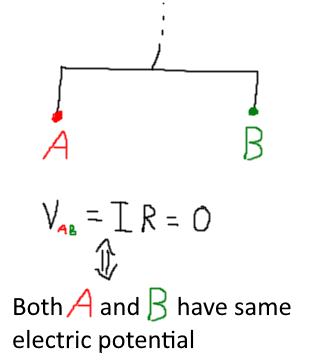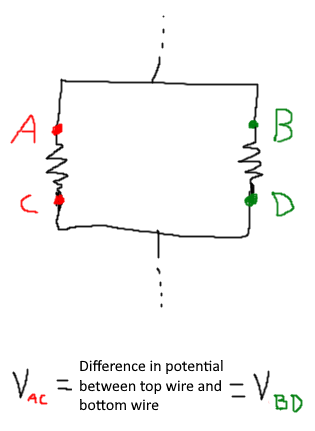The reason I have seen argumenting for this is that the electrons before the resistors appears in the same place, and the electrons after the resistors appears at the same place. And that means that the electrons that goes through resistor \$R_1\$ and those going through resistor \$R_2\$ are at the state before and after.
Except when one is being precise, that is a fairly good explanation.
But why does this argument hold? Voltage is energy per charge, why couldn't it be the case that even though the electrons are at the same place before and after going through the resistors, the work done on the electrons going through \$R_1\$ is higher than the electrons going through resistor \$R_2\$?
[It sometimes is the case that the work done is different depending upon path. In particular, when there is a time-varying magnetic field involved. We will get to that. But first:]
Faraday's Law states:
$$\nabla \times E = -\frac{1}{c}\frac{\partial B}{\partial t}$$
If there is no time-varying magnetic field, this implies that
$$\nabla \times E = 0$$
which means that E is a conservative field. Being a conservative field implies that E is the gradient of a potential function, (which we call V)
$$E = \nabla V$$
V, being a potential function implies that the work done to move an electron from one point to another does not depend upon the path taken. That is why the voltage across two resistors in parallel are said to be equal. And, this is true whenever there is no time-varying magnetic field present.
[However, if there is a time varying magnetic field affecting the circuit, one needs to model this as if there were a transformer, or voltage source, present in one or both of the paths through the resistors. The voltages induced by these transformers will affect the voltage "dropped" by each of the resistors.]



